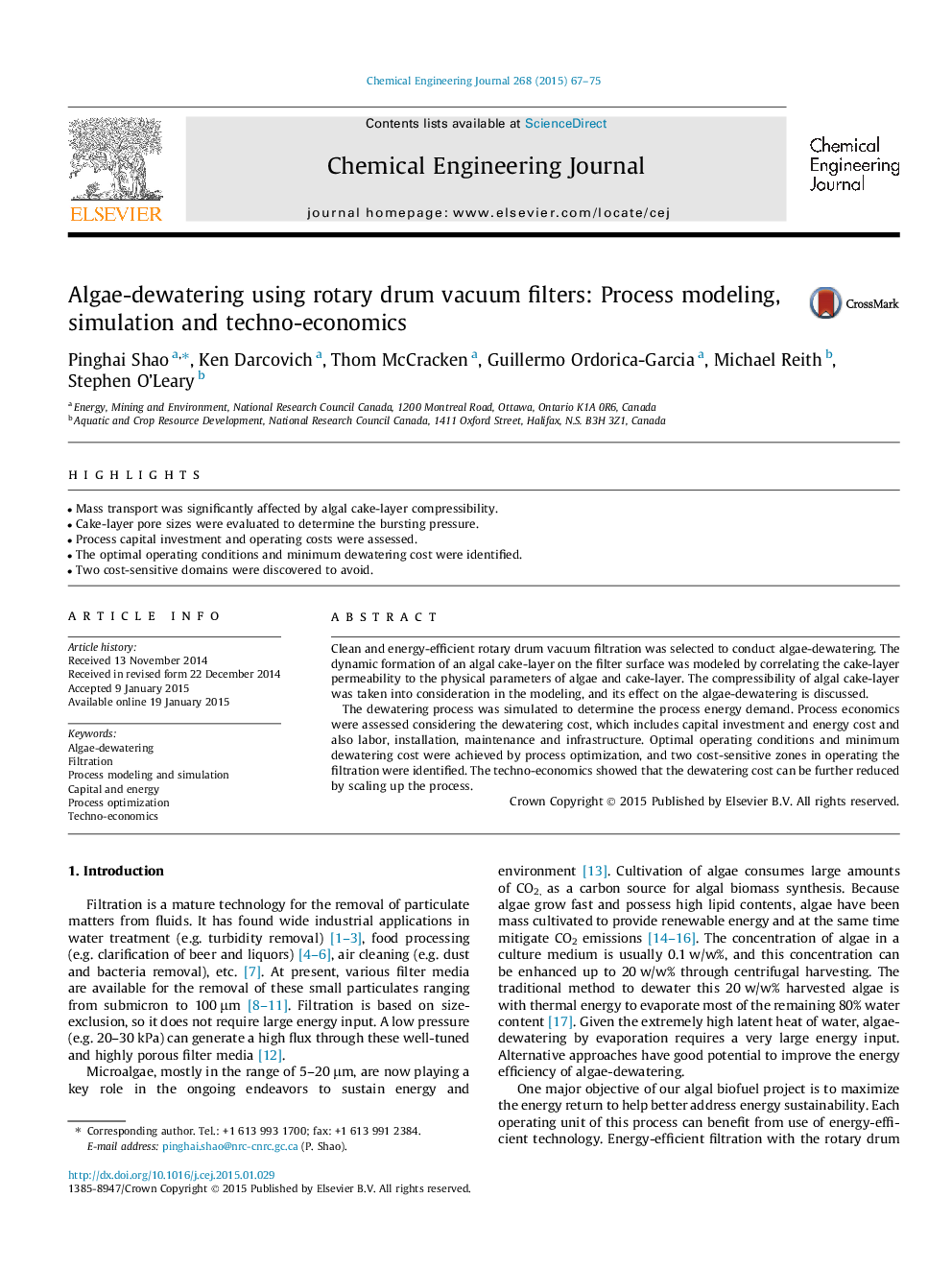| Article ID | Journal | Published Year | Pages | File Type |
|---|---|---|---|---|
| 146560 | Chemical Engineering Journal | 2015 | 9 Pages |
•Mass transport was significantly affected by algal cake-layer compressibility.•Cake-layer pore sizes were evaluated to determine the bursting pressure.•Process capital investment and operating costs were assessed.•The optimal operating conditions and minimum dewatering cost were identified.•Two cost-sensitive domains were discovered to avoid.
Clean and energy-efficient rotary drum vacuum filtration was selected to conduct algae-dewatering. The dynamic formation of an algal cake-layer on the filter surface was modeled by correlating the cake-layer permeability to the physical parameters of algae and cake-layer. The compressibility of algal cake-layer was taken into consideration in the modeling, and its effect on the algae-dewatering is discussed.The dewatering process was simulated to determine the process energy demand. Process economics were assessed considering the dewatering cost, which includes capital investment and energy cost and also labor, installation, maintenance and infrastructure. Optimal operating conditions and minimum dewatering cost were achieved by process optimization, and two cost-sensitive zones in operating the filtration were identified. The techno-economics showed that the dewatering cost can be further reduced by scaling up the process.
